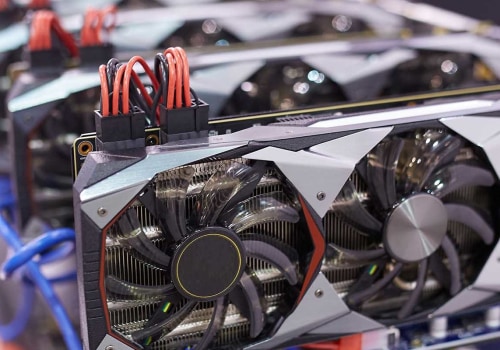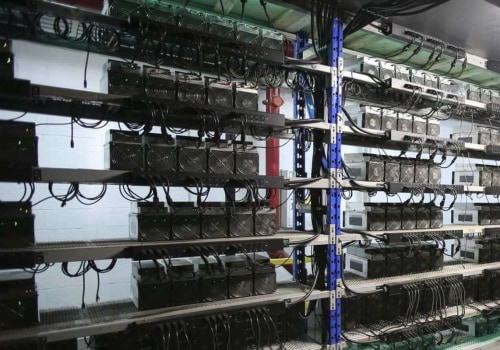Have you ever wondered how to maximize your resources and profits in the burgeoning world of cryptocurrency mining? Dual Mining is an increasingly popular method that allows miners one GPU to mine two cryptocurrencies at once. But before committing, it’s important to understand what dual mining entails. In this article we explore all facets of dual-mining; uncovering its advantages and drawbacks so can be sure whether or not double-mining will work for you!
What is Dual Mining?
Dual mining is the simultaneous mining of two different cryptocurrencies, allowing miners to extract more profits from their hardware. This is done by running two separate algorithms or coins at the same time. The miner devotes some of their hash power to one coin, and then uses what’s left over for a second currency. Generally speaking, dual mining works best when one of the coins is Ethereum, as its mining algorithm is more power-efficient and allows it to be mined with other cryptocurrencies.
It’s important to note that dual-mining will not double your profits; however, miners can still benefit from what’s known as “diversification of hashpower.” By having a miner’s resources dedicated to two different coins, miners can increase their profits by reducing the risk of market fluctuations. This is especially true when one coin is more volatile than the other, as it can help stabilize the profits gained from mining.
Which Crypto is the Best for Dual Mining?
Ethereum is widely accepted as the ideal option for dual mining, allowing miners to pair it with an array of other cryptocurrencies including Ethash, Siacoin, Lbry and Keccak. The most successful combinations are Ethereum-Zilliqa and Ethereum-Siacoin; miners can calculate their profitability using dedicated calculators which simply require inputting details such as mining speed and energy cost.
AMD RX470/570 cards offer up to 28 Mh/s while RX460/560 functions at 13 Mh/s whilst Nvidia GTX 1060 will provide 19-24 Mh / s depending on its size - however some currencies may yield lower performance rates than others e.g Decred tends to perform two or three times slower when mined by these GPUs in comparison.
When considering investing in newly released, or lesser known cryptocurrencies, it's essential to keep in mind that certain exchanges may not offer adequate support for these digital currencies.
How to Start Dual Mining?
To start dual mining, one must first decide what coins they would like to mine. Once the decision is made, miners can begin configuring their software and hardware. This involves downloading compatible mining software such as Claymore or getting a GPU miner if mining altcoins on Nvidia and AMD GPUs. Additionally, miners need to configure their wallets with the address of the target currency and set up a pool for dual mining.
Finally, miners can configure their system to begin dual mining. This involves setting the miner’s hash power and configuring what coins will be mined; with most software platforms allowing users to easily switch between different currencies.
It is important to note that dual mining requires more power than single-mining and as such, miners should keep an eye on their power consumption to ensure it is still cost-effective.
If you're looking to maximize your cryptocurrency earnings, dual mining provides a way to increase performance while keeping costs low. Setting up the process requires downloading and configuring drivers that are adapted for each coin mined as well as ensuring video card parameters reach maximum potential. To maintain optimal conditions without overheating, many miners utilize fan-controlling settings too! Popular programs used in this type of optimized operation include:
-
PhoenixMiner,
-
Gminer
-
NB Miner
So get ready for some serious rewards with minimal losses due to perfect setup tactics achieved through these great tools!
Dual Mining: Pros and Cons
While dual mining has its merits and limitations, it is still a beneficial function in the crypto-mining process.
Pros
-
Increased profits
-
Diversification of hash power to reduce risks from market fluctuations
-
Improved performance when one cryptocurrency is more volatile than the other
Cons
-
While it doesn’t double your profits, dual mining requires more power and hardware resources.
-
Not all cryptocurrencies are ideal for dual mining; some may perform poorly when mined together.
-
If a coin is not listed on an exchange, then it will be difficult to set up a pool for dual mining.
Overall, dual mining allows miners to take advantage of two different coins and increase their profits with minimal risk. With the right setup and choice of currencies, miners can maximize their earnings with this powerful mining feature.
Conclusion
Dual mining is a popular approach for miners looking to maximize their gains, but it's not without its challenges. As the main cryptocurrency carries most of the load from graphics cards, dual mining may yield lower returns when compared with solo-mining. Proper system settings are essential in order to achieve optimal performance and efficient temperature control - failure to do so could lead to damage or malfunctioning due to excessive heat as well as noise levels created by heavy loads.
Also, dual mining offers a unique opportunity for miners to increase efficiency, reduce energy consumption and achieve performance stability. Working in pairs of two different cryptocurrencies ensures fair coin distribution across members taking part in the pool - however, it comes with an additional cost due to its higher commission fee. This method is environmentally-friendly as well as profitable, making dual mining one of the most attractive options in today’s market.








